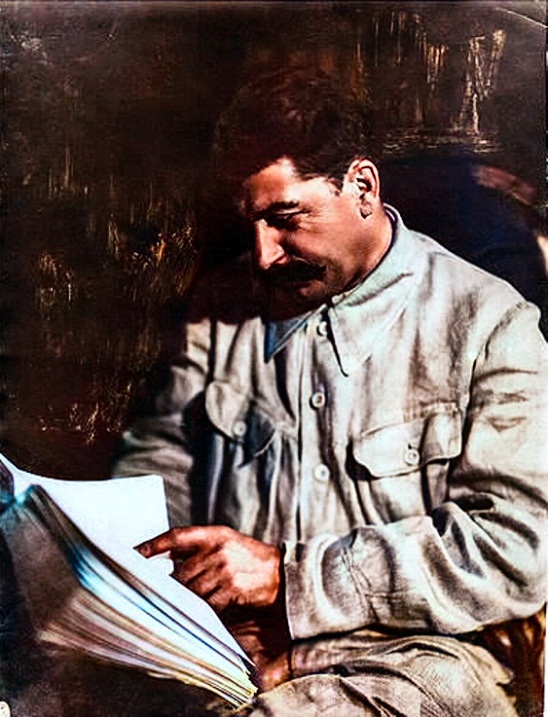Image is of Yemen seizing the first ship in its blockade of Israel (the Galaxy Leader) with a helicopter raid.
Alternate title: What If It Was The Bab El-Womandeb And It Was Just For The Ladies?
Ansarallah is a key component of the broader Resistance movement, backed by Iran, and has been a stalwart member in engineering the ongoing collapse of Zionism. It has steadily escalated both its rhetoric and, rarely nowadays, its actions, proving that the mythical "red line" might actually exist in the world after all, after going MIA in both Russia and China. It has been striking first Israel-owned ships heading through the Bab el-Mandeb - the strait that leads into the Red Sea and then to the Suez Canal - and, recently, has demonstrated its promise that any ships that intend to dock in Israel will be attacked. While this is really only half a blockade, the cost of going around Africa is significant, and Western insurance companies really don't like it when their ships get blasted by missiles and drones. Several shipping companies have already stated their intention to alter/stop shipping routes through the Red Sea, trying to prompt the West to find a "solution".
Despite US naval presence in the area, Yemen possesses the ability to strike the oil refining facilities of the Gulf monarchies, leaving the US in a very difficult position. If they attack Yemen, then not only do Western ships risk being attacked directly, but those oil refineries may go up in smoke depending on if they help the West - and global oil prices will skyrocket, in an already declining world economy - and it might cost several Western leaders their leadership positions, including Biden himself. A regional war could ultimately tumble into worldwide chaos.
Equally, however, the US cannot afford to lose Israel. It is the single most important American imperial outpost, perhaps alongside Taiwan. If Zionism is destroyed as a local destabilizing influence, then the Russia-China-Iran axis will find itself in a leadership position over the region. Israeli military losses in Gaza increase every single day as they advance further into the labyrinth death trap under the obligation to show some kind of military victory, with Hamas' strategy of attrition taking its toll. And Hezbollah sits there, having destroyed most of the border infrastructure, silently threatening the obliteration of Israel's infrastructure under the rain of a hundred thousand missiles.
As world attention gradually shifts away from the Gaza genocide, we continue to approach the brink.
The weekly update is here on the website.
Your Tuesday Briefing is here in the comments and here on the website.
Your Thursday Briefing is here in the comments and here on the website.
Your Saturday Briefing is here in the comments and here on the website.
The Country of the Week is Yemen! Feel free to chime in with books, essays, longform articles, even stories and anecdotes or rants. More detail here.
The bulletins site is here!
The RSS feed is here.
Last week's thread is here.
Israel-Palestine Conflict
Sources on the fighting in Palestine against Israel. In general, CW for footage of battles, explosions, dead people, and so on:
UNRWA daily-ish reports on Israel's destruction and siege of Gaza and the West Bank.
English-language Palestinian Marxist-Leninist twitter account. Alt here.
English-language twitter account that collates news (and has automated posting when the person running it goes to sleep).
Arab-language twitter account with videos and images of fighting.
English-language (with some Arab retweets) Twitter account based in Lebanon. - Telegram is @IbnRiad.
English-language Palestinian Twitter account which reports on news from the Resistance Axis. - Telegram is @EyesOnSouth.
English-language Twitter account in the same group as the previous two. - Telegram here.
English-language PalestineResist telegram channel.
More telegram channels here for those interested.
Various sources that are covering the Ukraine conflict are also covering the one in Palestine, like Rybar.
Russia-Ukraine Conflict
Examples of Ukrainian Nazis and fascists
Examples of racism/euro-centrism during the Russia-Ukraine conflict
Sources:
Defense Politics Asia's youtube channel and their map. Their youtube channel has substantially diminished in quality but the map is still useful.
Moon of Alabama, which tends to have interesting analysis. Avoid the comment section.
Understanding War and the Saker: reactionary sources that have occasional insights on the war.
Alexander Mercouris, who does daily videos on the conflict. While he is a reactionary and surrounds himself with likeminded people, his daily update videos are relatively brainworm-free and good if you don't want to follow Russian telegram channels to get news. He also co-hosts The Duran, which is more explicitly conservative, racist, sexist, transphobic, anti-communist, etc when guests are invited on, but is just about tolerable when it's just the two of them if you want a little more analysis.
On the ground: Patrick Lancaster, an independent and very good journalist reporting in the warzone on the separatists' side.
Unedited videos of Russian/Ukrainian press conferences and speeches.
Pro-Russian Telegram Channels:
Again, CW for anti-LGBT and racist, sexist, etc speech, as well as combat footage.
https://t.me/aleksandr_skif ~ DPR's former Defense Minister and Colonel in the DPR's forces. Russian language.
https://t.me/Slavyangrad ~ A few different pro-Russian people gather frequent content for this channel (~100 posts per day), some socialist, but all socially reactionary. If you can only tolerate using one Russian telegram channel, I would recommend this one.
https://t.me/s/levigodman ~ Does daily update posts.
https://t.me/patricklancasternewstoday ~ Patrick Lancaster's telegram channel.
https://t.me/gonzowarr ~ A big Russian commentator.
https://t.me/rybar ~ One of, if not the, biggest Russian telegram channels focussing on the war out there. Actually quite balanced, maybe even pessimistic about Russia. Produces interesting and useful maps.
https://t.me/epoddubny ~ Russian language.
https://t.me/boris_rozhin ~ Russian language.
https://t.me/mod_russia_en ~ Russian Ministry of Defense. Does daily, if rather bland updates on the number of Ukrainians killed, etc. The figures appear to be approximately accurate; if you want, reduce all numbers by 25% as a 'propaganda tax', if you don't believe them. Does not cover everything, for obvious reasons, and virtually never details Russian losses.
https://t.me/UkraineHumanRightsAbuses ~ Pro-Russian, documents abuses that Ukraine commits.
Pro-Ukraine Telegram Channels:
Almost every Western media outlet.
https://discord.gg/projectowl ~ Pro-Ukrainian OSINT Discord.
https://t.me/ice_inii ~ Alleged Ukrainian account with a rather cynical take on the entire thing.


Very interesting story about the massive political changes in Yemen in the 1940s. Had this saved in Arabic somewhere, so I translated this for you homies and cleaned it up with comrade ChatGPT.
Until the mid-twentieth century, Yemen in the 1700s retained a sense of enduring stability, seemingly impervious to the transformative winds of change. To external observers, Yemen appeared motionless and resistant to evolution. In the northern part of the country, the Zaydi Imamate stood as an institution with an eleven-century legacy, interrupted only briefly on two occasions. The entrenched divides, passed down through generations, manifested predictably in various relationships: Zaydis versus Shafi’is, Zaydis versus the diminishing Isma'ilis, Qahtanis and Seyyids, Upland tribes versus the villages and plantations of Lower Yemen, and coastal towns versus inland towns, among others. Although change had the potential to manifest, the fundamental structure remained steadfast.
Remarkably, Aden, under British administration, thrived as the world's second-busiest port at times, trailing only behind New York City. Meanwhile, families from Hadhramut sought prosperity in far-flung places such as Singapore and Indonesia. International trade in coffee flourished, sustaining activity in the western uplands and a few Red Sea ports, despite a decline initiated by evolving commercial and global cultivation patterns by the mid-eighteenth century. However, these shifts failed to shake the foundations of deeper traditions.
One might have anticipated that Aden, as a bustling port, could become a breeding ground for ideological shifts. It seemed plausible that subversive ideas could disseminate among the diverse migrant labor population, originating from all corners of Yemen, and subsequently find their way back to their respective homelands. Alternatively, returning Hadhramis might import provocative notions from their experiences abroad. Yet, when disruption eventually unfolded, it did so unexpectedly, emanating from a source that caught everyone off guard.
In the aftermath of World War II, the Kingdoms of Iraq and Saudi Arabia identified in Yemen a kindred, traditionalist state, deserving of reinforcement. This was particularly crucial as the Yemeni Imamate was undergoing a significant shift towards hereditary rule, mirroring the established royal traditions in Saudi Arabia and Iraq, in stark contrast to the Zaydi Shia tradition. A strategic plan was devised to enhance and modernize the Yemeni military. In 1940, Iraq implemented a multifaceted approach, flying in Yemeni students for enrollment in its military academy while concurrently dispatching a training mission to Yemen. This mission included Jamil Jamal, a young officer from Mosul, a decision that would prove to have profound consequences.
Merely four years earlier, Jamal had served as the aide-de-camp to the leader of the 1936 coup, directly implicated in the murder of the Iraqi Army's 'founder.' Despite the coup's failure and the demise of its leader, authorities sought to rehabilitate Jamal, consigning him to career exile as an officer in the riverine police. Unexpectedly, he found himself attached to the Yemen training mission, offering an opportunity for redemption. The mission concluded in 1943, yet Jamal chose to remain in Yemen. Five years later, he employed his coup-making skills, aligning with a plot to assassinate the ruling Imam. A new Imam briefly ruled in Sana’a before being overpowered by the slain Imam’s son and Jamal was executed soon after. This event triggered a series of complex local wars in both northern and southern Yemen, financially and logistically supported by regional powers. The ensuing two decades, spanning the 1960s and 1970s, witnessed a convoluted interplay of old cleavages, with Aden losing its significance due to geopolitical shifts brought about by the Arab-Israeli conflict.
Aden, once a bustling maritime destination, diminished in importance as the Suez Canal blockade during the Arab-Israeli conflict rendered it largely irrelevant. By the time the canal reopened, technological advancements allowed ships to travel longer distances without the need for restocking, further diminishing Aden's strategic value. In the late 1970s, a substantial portion of Yemen's male population sought employment as migrant laborers in the oil-rich Persian Gulf countries, reshaping the nation's economic landscape. As remittances from abroad became the primary source of income, Aden and traditional coffee cultivation ceded their prominence. The societal fabric in Yemen began to unravel swiftly, and the dissolution of long-standing structures occurred surprisingly rapidly. This tumultuous period prompted adventurous figures, such as the late President Ali Abdullah Saleh, to actively participate in reshaping Yemen's destiny.
Thanks for sharing.
Thanks, that was an educational read.